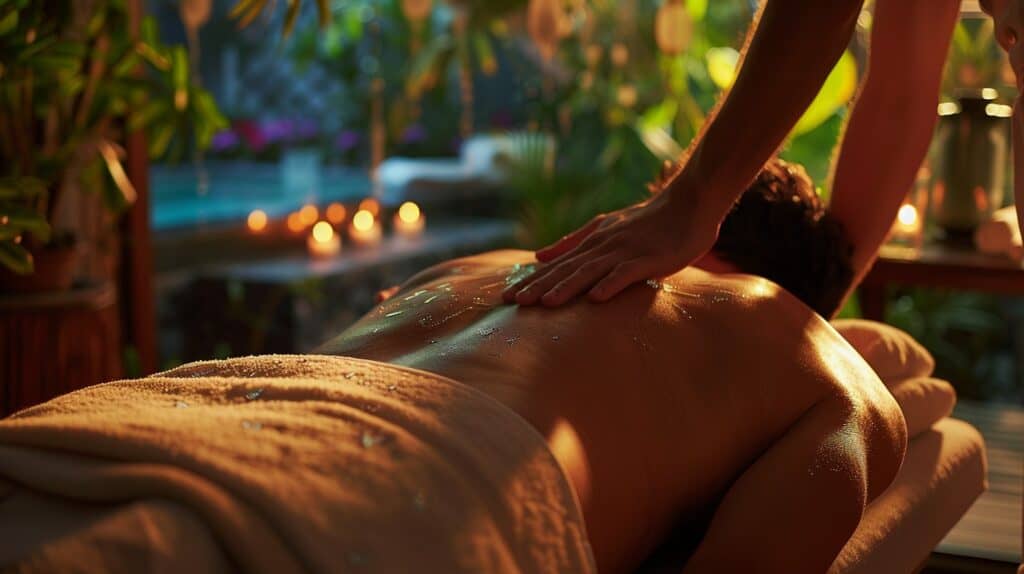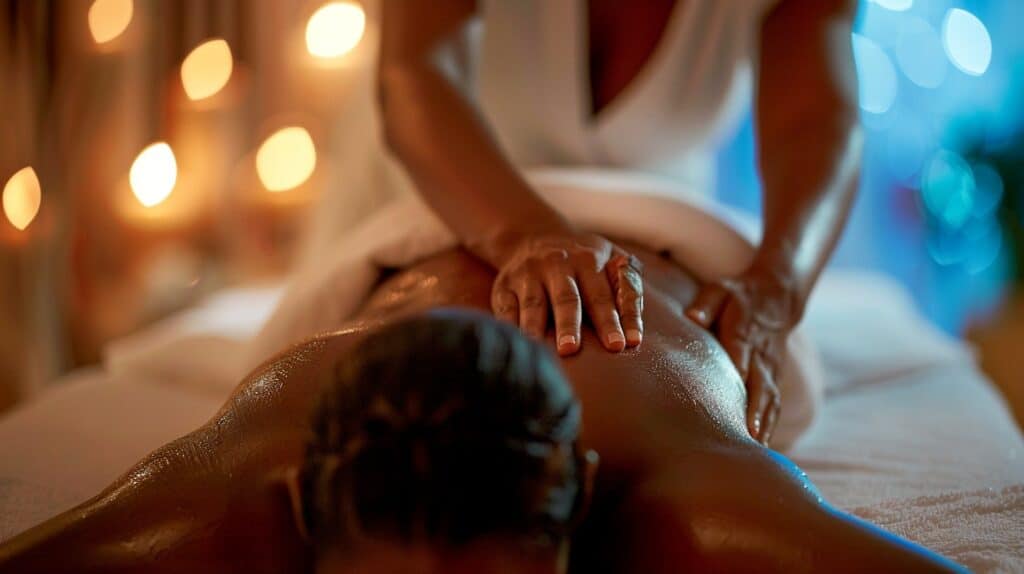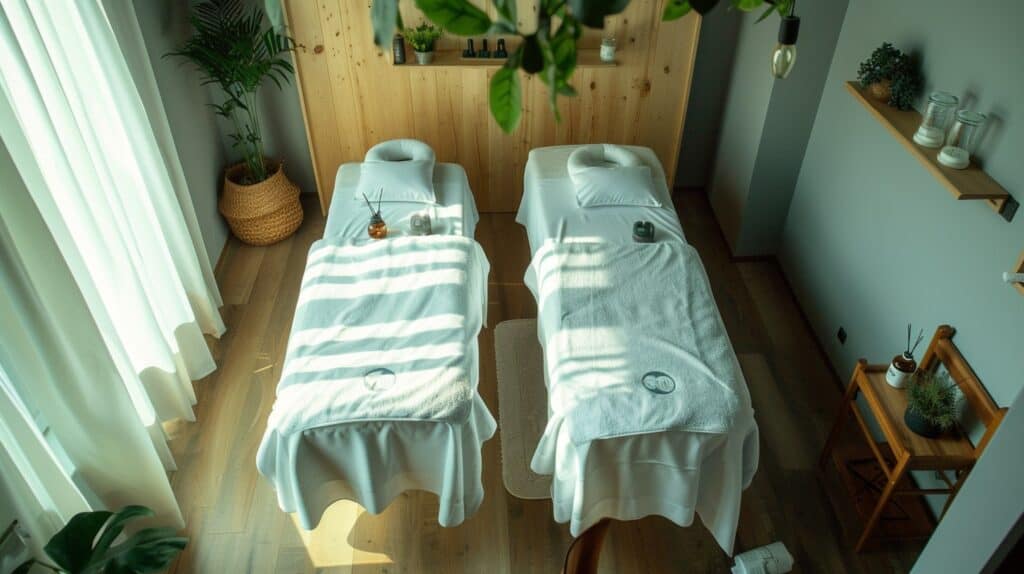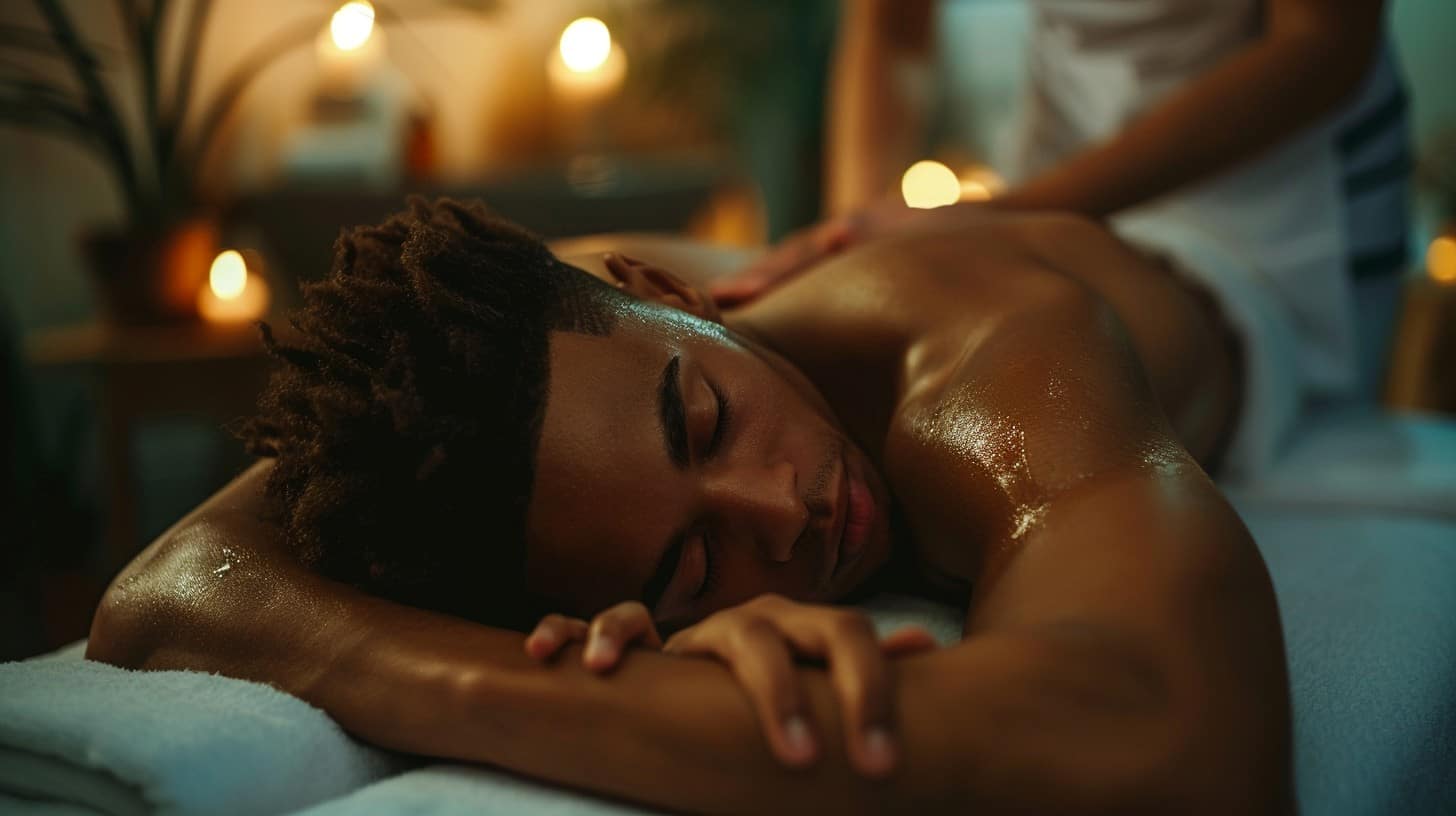Have you ever wondered why a good massage just feels so darn good? It’s like magic for your muscles. Massages aren’t just a fancy treat – they offer real science-backed benefits.
This article will break down the biological reasons behind that blissful, melt-into-the-table feeling. And trust me, you’ll want to book your next appointment ASAP.
Key Takeaways
Massages feel good because they stimulate sensory receptors in the skin that detect pressure, vibration, and temperature, sending pleasurable signals to the brain through nerve fibers.
Massage interrupts pain signals by activating A-beta nerve fibers that transmit pleasant sensations, blocking slower C-fibers that carry pain messages before they reach the brain.
Massages trigger the release of endorphins, the body’s natural painkillers, which bind to opioid receptors in the brain and spinal cord, producing a feeling of euphoria and relaxation.
Improved blood and lymph circulation from massage delivers more oxygen and nutrients to muscles while removing waste products, leaving you feeling invigorated.
Deep tissue massage stimulates the vagus nerve, enhancing relaxation by lowering blood pressure and heart rate through neural responses in the brain and body.
Table of Contents
The Science Behind Massage

Massages are all about stimulating your senses and nerves. You got receptors all over your body that pick up on different sensations — pressure, temperature, vibration, you name it.
Once those receptors get activated, they send signals through your nerve fibers to your brain. This whole process is what lets you actually feel the massage happening. Pretty wild when you think about it!
Amidst a variety of massage experiences, tantric massage in London stands out for those exploring deeper and more intimate connections through touch. This practice not only engages the body’s sensory receptors but also delves into the spiritual and emotional planes. London, with its diverse and multicultural backdrop, offers a rich array of practitioners skilled in the ancient art of tantric massage, providing a unique opportunity for holistic healing.
By focusing on mindful, intentional strokes, tantric massage in London can unlock new levels of relaxation and awareness, making it a notable addition to the rich tapestry of massage therapies available in the city.
Sensation and Receptors
Your skin is a magnificent network of receptors, specialized nerves designed to pick up different sensations — pressure, vibration, temperature. These sensory receptors send signals through nerve fibers to your brain, allowing you to feel the masseuse’s touch.
Pretty nifty, eh? As the massage stimulates different types of receptors, your brain interprets this input as pleasurable sensations. For example, Pacinian corpuscles sense vibration and movement, while Meissner’s corpuscles detect light touch.
The varied techniques employed by your massage therapist activate these receptors in unique ways, creating that sublime “ahhh” feeling.
Proprioceptors play a key role too — they provide your brain with info about your body’s position and movement. So as the massage manipulates your muscles and joints, proprioceptors communicate these changes, enhancing your body awareness.
The Role of Nerve Fibers
Nerve fibres play a crucial role in why massages feel so damn good. Our skin is loaded with nerve endings – some respond to pressure, some to temperature, others to pain. During a massage, the therapist’s strokes stimulate specific nerve fibres called ‘A-beta fibres‘.
These dudes are rapid-firing, sending zingy signals to your brain saying “yo, this feels amazing!” Simultaneously, they also interrupt the slower ‘C-fibres‘ that transmit pain signals.
It’s like a highway traffic cop, allowing pleasure to zoom through while stopping discomfort in its tracks.
Now, here’s where it gets wild – those nifty A-beta fibres have another superpower. They can block the transmission of pain messages from other nerve fibres before they even reach your brain.
The Connection Between Massage and Pain Relief

Massage interrupts pain signals before they reach the brain. When hands knead muscle tissue, it creates a pleasant sensation that overpowers pain receptors — like a traffic cop waving through a flow of pleasurable feelings.
This competition between pain and pleasure is your body’s way of prioritizing inputs. Why dwell on discomfort when there’s a rush of endorphins to bask in? Massage hijacks your nervous system’s attention — pain gets put on hold.
Interrupting Pain with Pleasure
Massages stimulate pleasure receptors—those little guys flood our brains with endorphins. Think of them as nature’s painkillers… a surge of euphoric bliss to drown out discomfort.
It’s like getting high on your own supply—all natural, no shady dealings required.
Endorphins bind to the same receptors as opioid drugs… but without the nasty side effects. So you get that floaty, relaxed sensation—interrupting pain signals before they reach your brain.
Additional Benefits of Massage

Massage actually does more than just relax you – it improves blood flow, triggers that opioid-like pleasure response… and who knows what other feel-good effects we have yet to uncover? Intrigued? Keep reading to explore the full range of massage benefits.
Improved Blood Flow
Massages supercharge blood circulation – hello improved oxygen and nutrient delivery! Your muscles relish the rush, rejuvenating cells and tissues. But that’s not all, amigo – lymph drainage kicks into high gear too.
Say goodbye to stagnant fluids hanging around, causing discomfort. A proper massage session gets everything flowing beautifully, leaving you feeling energized and revitalized.
Want more? Increased blood flow has a sneaky side effect – it ups the arrival of those feel-good hormones. Dopamine, serotonin, you name it… they come dancing in, boosting your mood.
The Opioid Effect
Massaging unlocks pleasure through the opioid effect – our body’s natural way to relieve pain. During a massage, pressure triggers the release of endorphins – those feel-good chemicals that act like morphine.
Endorphins bind to opioid receptors in your brain, spinal cord, and other areas… flooding you with euphoria, reducing stress. It’s nature’s way to counteract physical discomfort – the ultimate drug deal without dealing drugs!
Now here’s where it gets interesting. Applying sustained pressure during deep tissue massage stimulates the vagus nerve – a superhighway connecting your brain to major organs. This vagal stimulation triggers a cascade of neural responses… enhancing relaxation, lowering blood pressure and heart rate.
FAQs About Why Massages Feel So Good
What makes massages feel so darn good?
Massages feel amazing because they stimulate the body’s touch receptors and nociceptors – those little guys that send sensory information to your central nervous system. This triggers a release of feel-good neurotransmitters like endogenous opioids, putting your brain’s pleasure centers into overdrive. It’s like a natural high without the hangover!
Can massages actually help with pain relief?
You bet! Massages are a godsend for chronic pain sufferers. The pressure and strokes help disrupt something called “pain modulation” – that’s when your body misinterprets stimuli from the periphery as painful. Massage resets that response, providing sweet, sweet relief. It’s like a reboot for your central nervous system’s pain processing.
What types of massages are best for relaxation?
For pure blissed-out relaxation, you can’t go wrong with a classic Swedish massage. The long, gliding strokes and kneading motions are designed to melt away stress and tension. But if you’re looking to really unwind those stubborn knots, a deep tissue massage might be more your speed – just be prepared for some good hurt!
Besides feeling amazing, what other benefits do massages offer?
Where do I start? Massages can improve sleep quality, boost mental clarity, relieve anxiety and depression, enhance immunity…the list goes on. They’re like a full-body tune-up for your mind and body. Some folks even claim massages can help with hair loss and male baldness – though the jury’s still out on that one.
How often should I get a massage for optimal benefits?
Most massage therapists recommend getting a rubdown every 4–6 weeks to reap the full range of health benefits. But really, you should listen to your body – if you’re feeling extra stressed, achy, or just in need of some serious self-care, don’t hesitate to book that appointment. Treat yo’self!
Are there any risks or side effects with massage therapy?
For the most part, massages are super safe when performed by a licensed, experienced therapist. You might experience some temporary soreness or bruising, especially with deeper techniques. But overall, the benefits far outweigh any minor side effects. Just be sure to communicate any injuries, conditions, or medications with your massage therapist beforehand.




